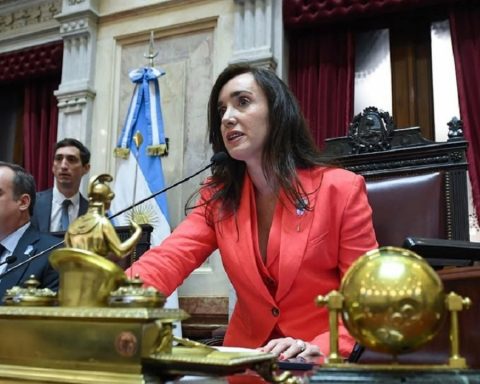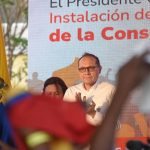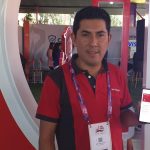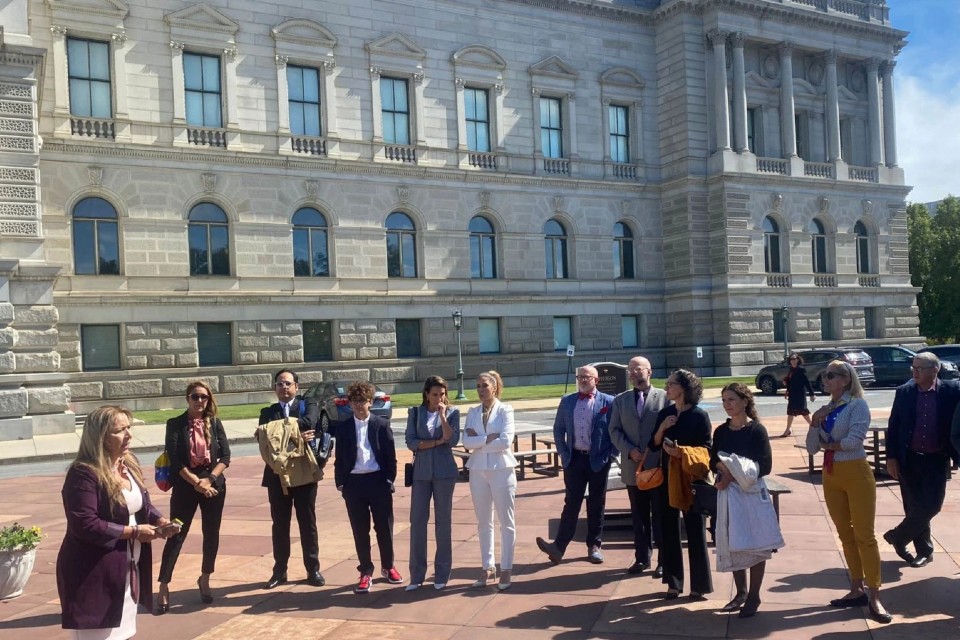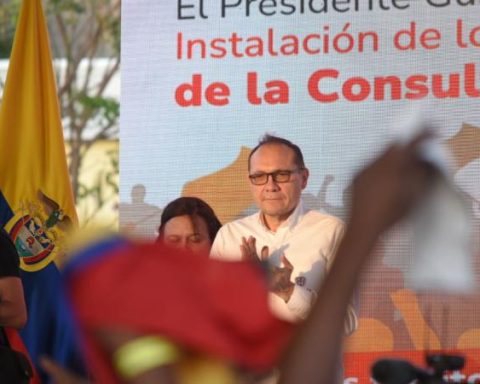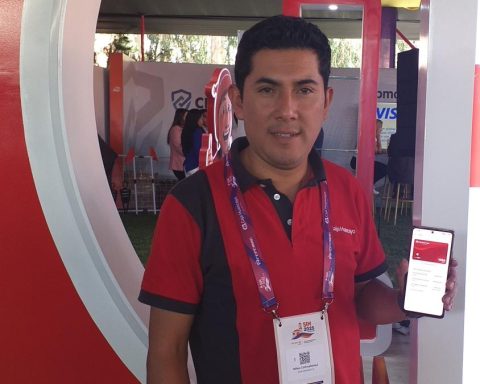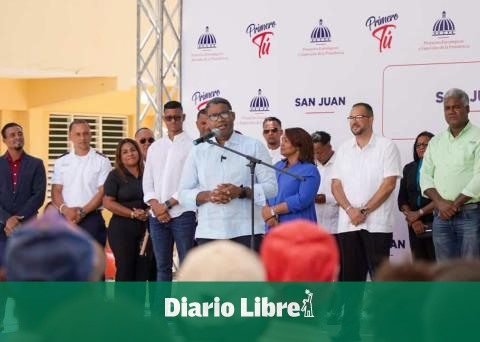
The CEO of YPF Luz, Martín Mandarano, considered that gas is the “fair complement” to renewable energies to compensate for the intermittence of these technologies and ensure the least environmental impact with added value, greater efficiency and competitiveness for the industrial sector.
The company created in 2013 is today the one with the largest share in the Term Market for Electric Power from Renewable Sources (Mater), with almost 40% of the total.
In addition, it ranks second in renewable generation and fourth in the ranking of electricity producers from all sources.
In an interview with Télam, Mandarano analyzed that the Mater will allow meeting all the demand of industrial clients, but that in order to meet the generation objectives by 2025, it will be necessary to define new mechanisms to contract residential growth. Here are the main sections of the report:

-Mandarano, is the Mater going to be the vector of exclusive development of renewables in the coming years?
-Since the beginning of YPF Luz in 2013, we have always aimed at the private market and the industrial market in terms of renewable energy. Today we lead that market with a 39% share because it is the way to guarantee our growth and from there we begin to develop projects that are more efficient every day. We understood that at some point the market was going to be more competitive than it is today, with many who played in the Renovar Plan and are now coming to the Mater.
Within our DNA we seek the benefit of the client from our production value chain. If we achieve an efficient process from construction to operation and we achieve a competitive price, we make the industry and the country competitive, that generates more work, more added value and that generates greater well-being for Argentina as a whole. That is why we aim at the industry, with a comprehensive vision of the Mater, which is and will continue to be the focus.
-You talk about efficiency, how competitive is renewable energy in Argentina?
-The industry is turning to this type of energy to change its energy matrix and because the price is competitive. We have managed to convert natural resources into wealth based on a competitive economic value, because today the market if you buy from Cammesa has prices between 85 and 100 dollars, and the markets for renewable technologies are at 60 or 65 dollars, with which there is a saving. So there is also a benefit to the industry in that.
The Los Teros, Manantiales Berh and Cañadón León wind farms.
-The sector still lacks the famous stability of supply…
-Intermittence is an issue to resolve. From the point of view of energy supply, it is efficient, so we think that the vector that complements renewable energy is natural gas. Argentina has a natural gas reserve for more than 150 years that can be produced efficiently and is the right complement to compensate for this intermittency with the least impact on the environment and the best benefit for the customer, bearing in mind that at some point the world will to introduce a CO2 regulation, with which the product that leaves Argentina must have a low CO2 (carbon dioxide) component.
Our offer matrix has that vision: a complementarity of low environmental impact, of high value for the client that guarantees the total of the operation and that is gas and renewables. Today, if we were 100% renewable, we would not be able to supply the demand of the industry all the time, so the concept is strategic and our position is 20% renewable, 80% thermal, always with natural gas because it is the transition vector that allows complement.
-Is it necessary for the State to resume an active role as energy taker or can the industry manage itself?
-Industries do not require state intervention. The industry is efficient in purchasing and we are efficient in production. The issue that needs to be resolved is what happens to residential demand because there today it cannot be contracted and someone has to take on the role of contracting to meet the percentage (20% of renewable generation by 2025) because the percentage of industrial demand is greater than that set by law. We are seeing it: there are companies that contract 100% of their demand and of the total demand we are between 12 and 13% of supply with renewables, even below the 16% that the law says. What is missing is some of the residential demand, which has an important weight in the matrix. There are two alternatives: either the distributors go out to contract with the private offer or that some Renovar plan be made again -with some new model because it had some deficiencies- for residential demand because otherwise the industry is going to overcomply and there is going to be a lack of part.
“We have very good winds, very good sun, we are efficient at building parks but we have nowhere to upload it, we do not have the electric transport infrastructure.”
-Generators always talk about limitations due to financing and infrastructure. Which conditions more a project?
-It seems that it should be the other way around, but the financial issue one can see that even in the local markets we have had good financing for our projects, which is positive. The world is also very open to the development of this type of renewable energy. The big issue and the big challenge in Argentina is transmission, infrastructure, which is the same problem that Vaca Muerta has and it is solving it very well with the new gas pipeline to convert a reserve or resource into wealth.
In our case, in renewable energy, it is the same. We have very good winds, very good sun, we are efficient at building parks but we don’t have where to upload it, we don’t have the infrastructure for electric transport and so we have to make this viable as a State issue, because in the face of the bottleneck instead of using the best place of the resource to make a wind farm or a solar park, you are going to look for where there is transportation capacity and it may not be the most efficient from the point of view of resources.
A new wind farm in Córdoba and the first solar farm in San Juan
YPF Luz will celebrate its tenth anniversary in 2023 and will seek to increase its supply of electricity generation with a set of projects that are underway, including a new wind farm in Córdoba, its first solar park in San Juan and the first steps in the development of green hydrogen.
The company has an installed capacity of 2,384 MW, which supplies the wholesale and industrial market. It also provides power generation solutions with thermal energy, renewable energy, cogeneration and distributed energy.
Your assets are in six provinces, in which it operates eight thermal power plants and three wind farms. Added to this is the construction of its first solar park, the Zonda, in San Juan.
“Our objective is to continue growing because there is a lot of potential for industrial demand in which we can collaborate. And in that sense we plan for the first ten years of the company to complete the works of El Zondawhich we have under construction in San Juan, and a wind project in the southern area of Córdoba”, said the CEO of YPF Luz, Martín Mandarano.
YPF’s first solar park will have an initial capacity of 100 MW, equivalent to the consumption of 140,000 homes, with an initial investment of more than 90 million dollars.
The general project foresees subsequent stages known as El Zona II, III and Tocota, which would allow reaching 500 MW of powerwhich will be oriented to the Term Market of Electric Power from Renewable Sources (Mater) and to the general distribution system, which require available transmission capacity.
In the case of General Levalle wind farm, in the south of the province of Córdoba, foresees a first stage of 65Mw for which it is in the bidding process for the equipment, closing the first contracts and waiting to gain more dispatch capacity. General Levalle will be YPF Luz’s fourth wind farm, after Manantiales Behr, in Chubut; Cañadón León, in Santa Cruz; and Los Teros, in the Buenos Aires match of Azul.
“From now on we continue to see wind projects in the province of Buenos Aires, in Santa Cruz also in Buenos Aires for the Mater and, without a doubt, for later we have in our portfolio and in study under analysis the production of green hydrogen from renewable energy , in Chubut and Santa Cruz as well,” said Mandarano.
For the director of the electricity generator, “green hydrogen is today a research development processbecause what is known to date involves a very expensive value chain that, we believe, is not the one that will end up predominating until the transportation problem is solved.”
“In itself -he continued- we have to be prepared because we believe that by 2030 that will be resolved and for that we have to have studied, know the technologies, know how to develop wind farms in scale to make them efficient to compete with the world in scale” .
In this sense, today the task to face “is to search for resources, make measurements, land near ports and scale wind farms. In that we must be very focused on the area of the coast of Santa Cruz and Chubut “.
Cryptocurrency mining in Vaca Muerta
The electric generator YPF Luz developed in Vaca Muerta a pilot project of electricity generation from residual gas or vent gas (flare) from hydrocarbon production, to supply the mining of cryptocurrencies that an international client carries out from the same formation.
This first experience started three months ago in the Loma Campana areathe iconic and foundational block for the use of unconventional resources in Vaca Muerta, which is exploited for oil production by YPF and the American Chevrón.
Mandarano explained that “this first pilot that is already working operates with 1Mw of generation and at the same time a second project is being developed to come into operation before the end of the year, of about 8 MW, in the Bajo del Toro area” which also belongs to YPF.
“We began to develop this generation pilot for cryptocurrency mining with a vision of sustainability and business from flare natural gaswhich cannot be used when exploration is being carried out and at the beginning of production of an oil field,” Mandarano explained.
This is the initial stage of a hydrocarbon development during which oil is associated with natural gas, which does not have the facilities to capture it and take it to a gas pipeline, so it cannot be used with the obvious environmental impact that that has.
Based on this situation, YPF Luz warned “the possibility of converting that waste into added valueat the end of the day -because the gas that goes to the flare is burned- with a use for the generation of electrical energy through the installation of motor generators at the foot of the deposit”.
These clients are installed in the Vaca Muerta desert with computer equipment mounted in containers and with high electrical demand, near the generators and hydrocarbon production wells, for which provision contracts are signed.
“They do the cryptocurrency mining and They pay us for the energy that we sell to them, sometimes tied to the price of the blockchain or sometimes at a fixed price for global data processing,” explained the manager. “Once the well is complete and already in oil and gas production, the generation and mining equipment will be withdrawn to another well at the start of development, because it is about modular equipment and easy to transport”, he pointed out.
“What we are doing is unusual because it is taking the demand to where the supply is, in this case in Vaca Muerta, when normally the supply is somewhere else, hundreds or thousands of kilometers away. It is necessary to build transmission, which is precisely one of the infrastructure problems“Mandarano completed.

